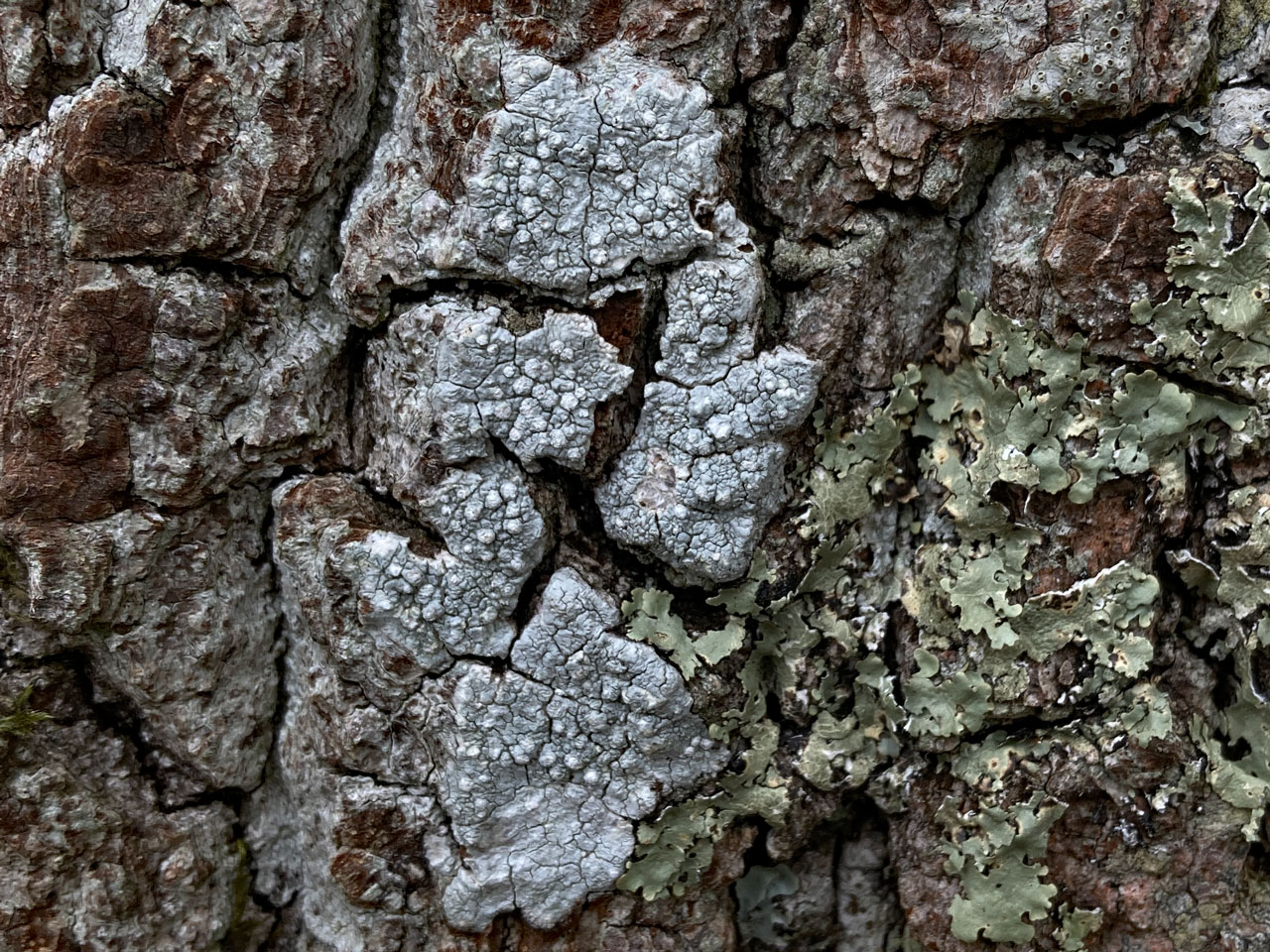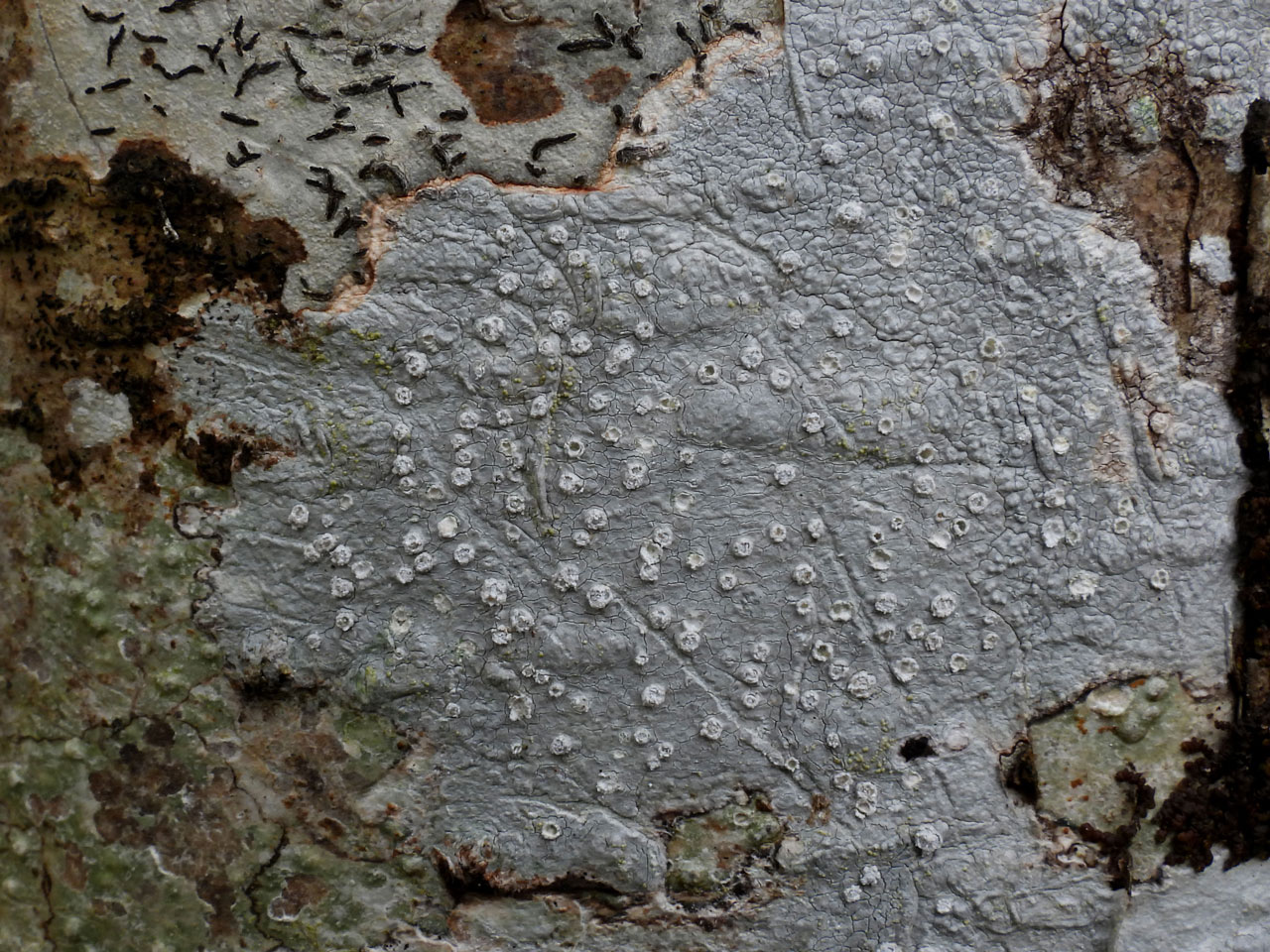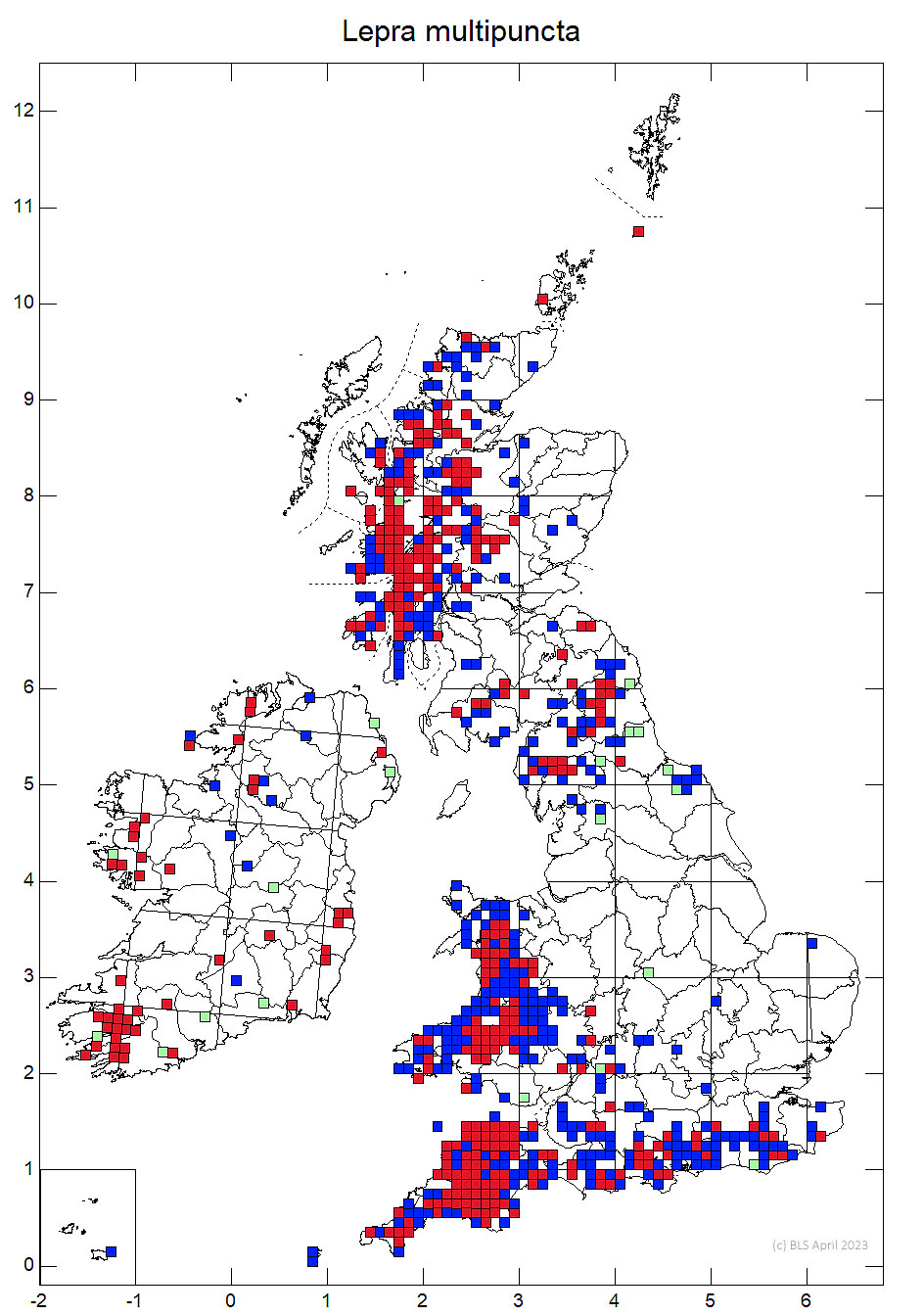A widespread woodland lichen in the south and west of Britain, but rare in Ireland. Typical of mesic smooth bark on large twigs and branches but also found on trunks in woodlands and woodland edges. Reasonably distinctive in its combination of looks and spot tests, with the K+ chestnut brown to reddish brown (slowish) particularly useful, but there are several similar looking Lepra, Pertusaria and Varicellaria species which need care in separating from this lichen .
Thallus wide-spreading, grey, thin to moderately thick; prothallus often present; upper surface ± smooth to coarsely warted, ± rimose-cracked, with ± elevated flat starkly white sorediate warts 0.5–1.5 (–2) mm diam. Apothecia frequent, (1-) 2-3 (-5) ± concealed within each sorediate wart; disc ca 0.5 mm diam., pale to blackish brown, veiled in soredia and crystals. Asci 1-spored. Ascospores 90–170 × 30–70 μm, elongate-ellipsoidal to cylindrical; wall ca 4.5 mm thick, uniform. Thallus and soralia C–, K+ chestnut brown to reddish brown, KC+ chestnut brown to reddish brown (quite a slow reaction, requires a minute or more), Pd+ orange-red, UV– or glaucous (physodalic and ± protocetraric acids).
The thallus is very variable; on sheltered, smooth bark it is often thin, continuous and even, but in more exposed habitats it is more robust and the surface is coarsely warted. Distinguished by the white, well-delimited scattered sorediate warts containing apothecia, 1-spored asci and chemistry; L. albescens and L. amara can appear similar but are nearly always sterile and have a different chemistry. Lepra ophthalmiza and L. pulvinata more closely resemble L. multipuncta but both also have different chemistries. In L. ophthalmiza the crenate margins of the soralia and developing apothecia are diagnostic. Lepra pulvinata looks very similar but is nearly always sterile, the soralia are set more densely and regularly on the thallus and there is a stronger contrast between the darker grey thallus and the white soralia.
Thallus frequently black-speckled by the conidiomata of Lichenostigma alpinum.
On mesic bark in woodlands and woodland edges, particularly on smooth bark on large twigs and branches, but also on trunks, including rough bark, rarely on siliceous rocks.

Throughout Britain, locally abundant, especially in the west. Rare in Ireland where it is associated with old woods and veteran trees.
Listed as an indicator species in the Southern Oceanic Woodland Index, but a relatively mobile species in the core areas of its range in the south and west of Britain. Scarce and much more dependant on old trees is Ireland, which may reflect the higher level of woodland fragmentation there.
Cannon, P., Kukwa, M., Coppins, B., Fletcher, A., Sanderson, N. & Simkin, J. (2021). Pertusariales: Ochrolechiaceae, including the genera Lepra, Ochrolechia and Varicellaria. Revisions of British and Irish Lichens 5: 1-17. Link
Text by Neil A Sanderson based on Cannon et al (2021)


